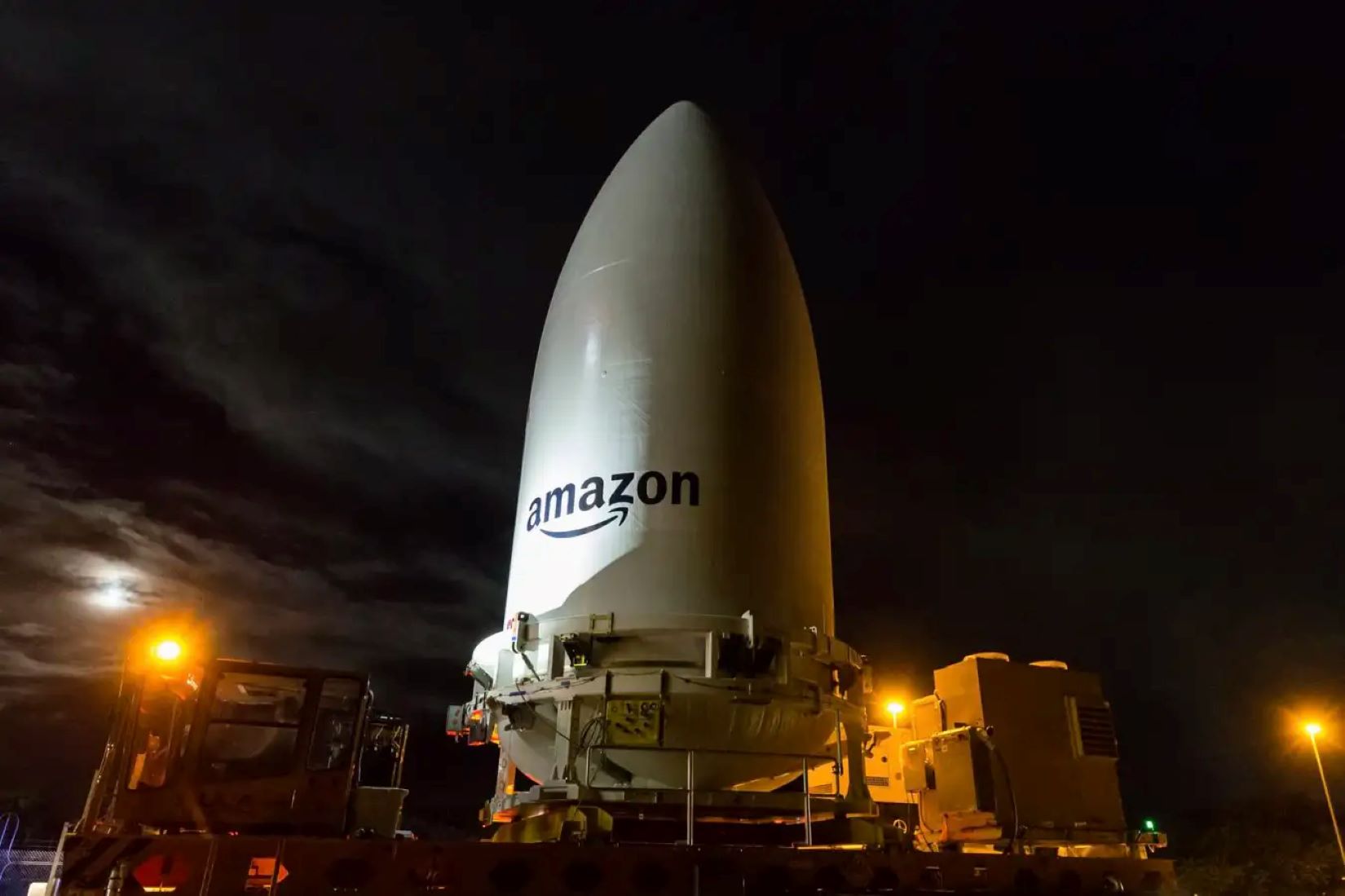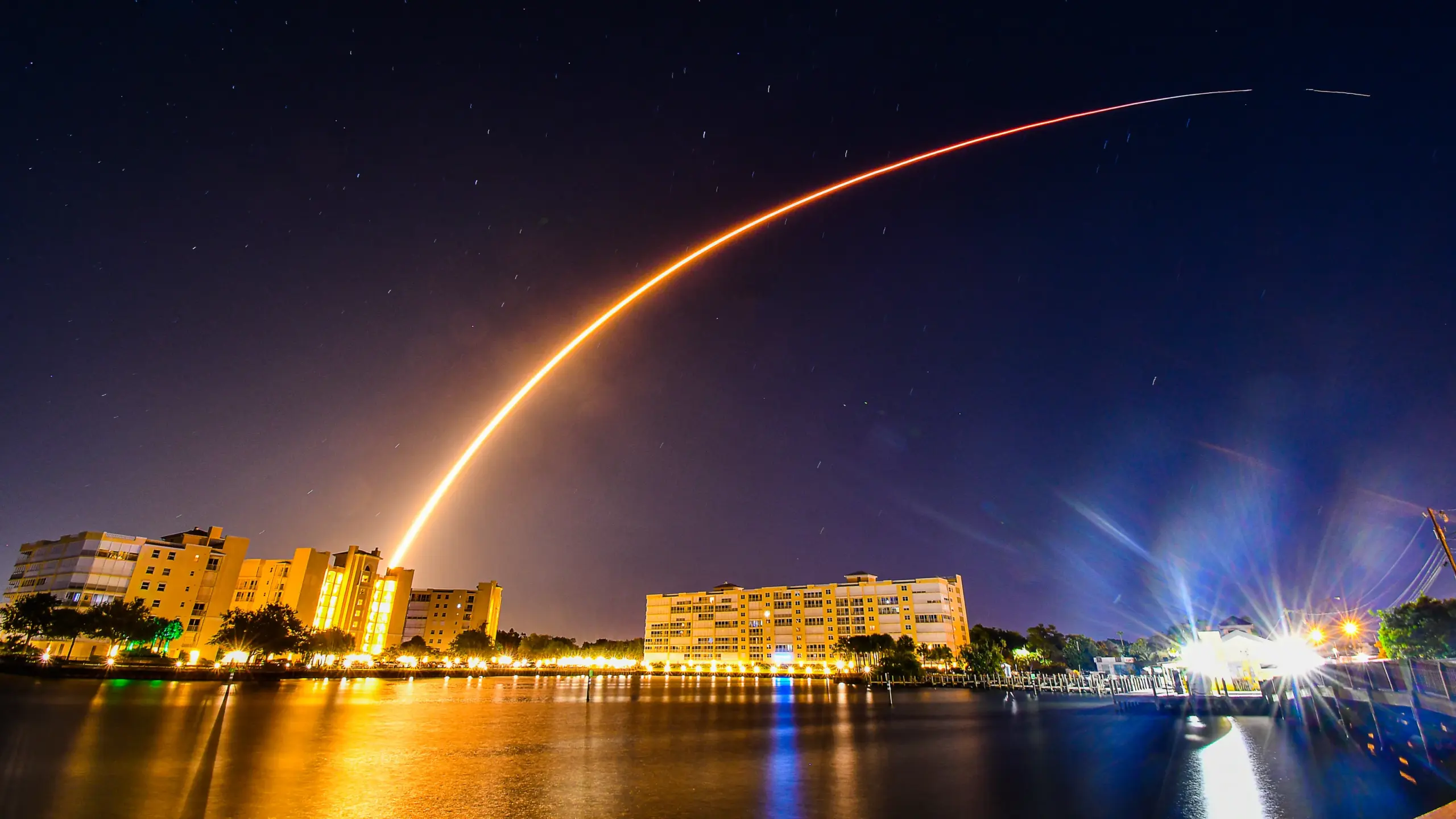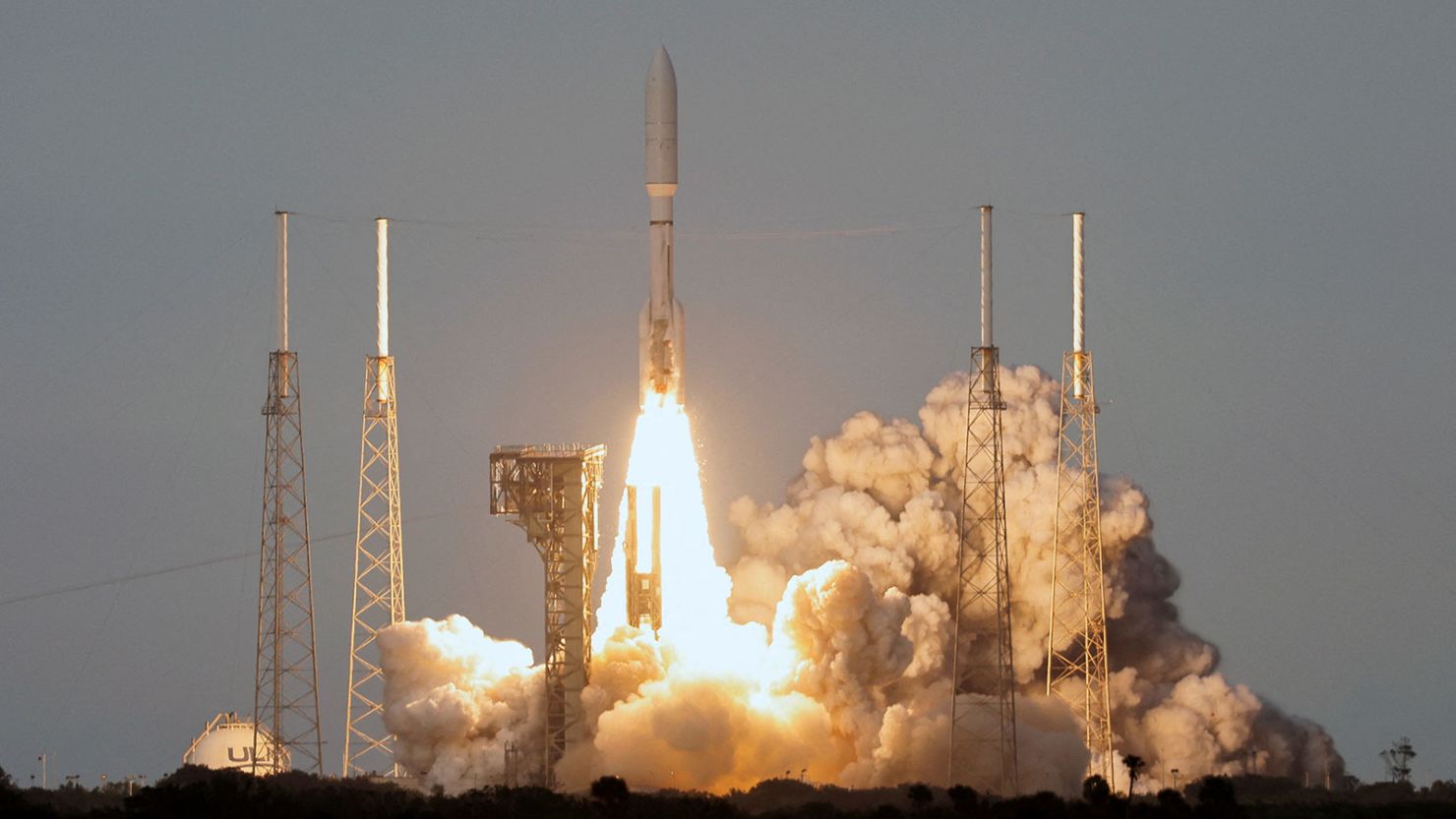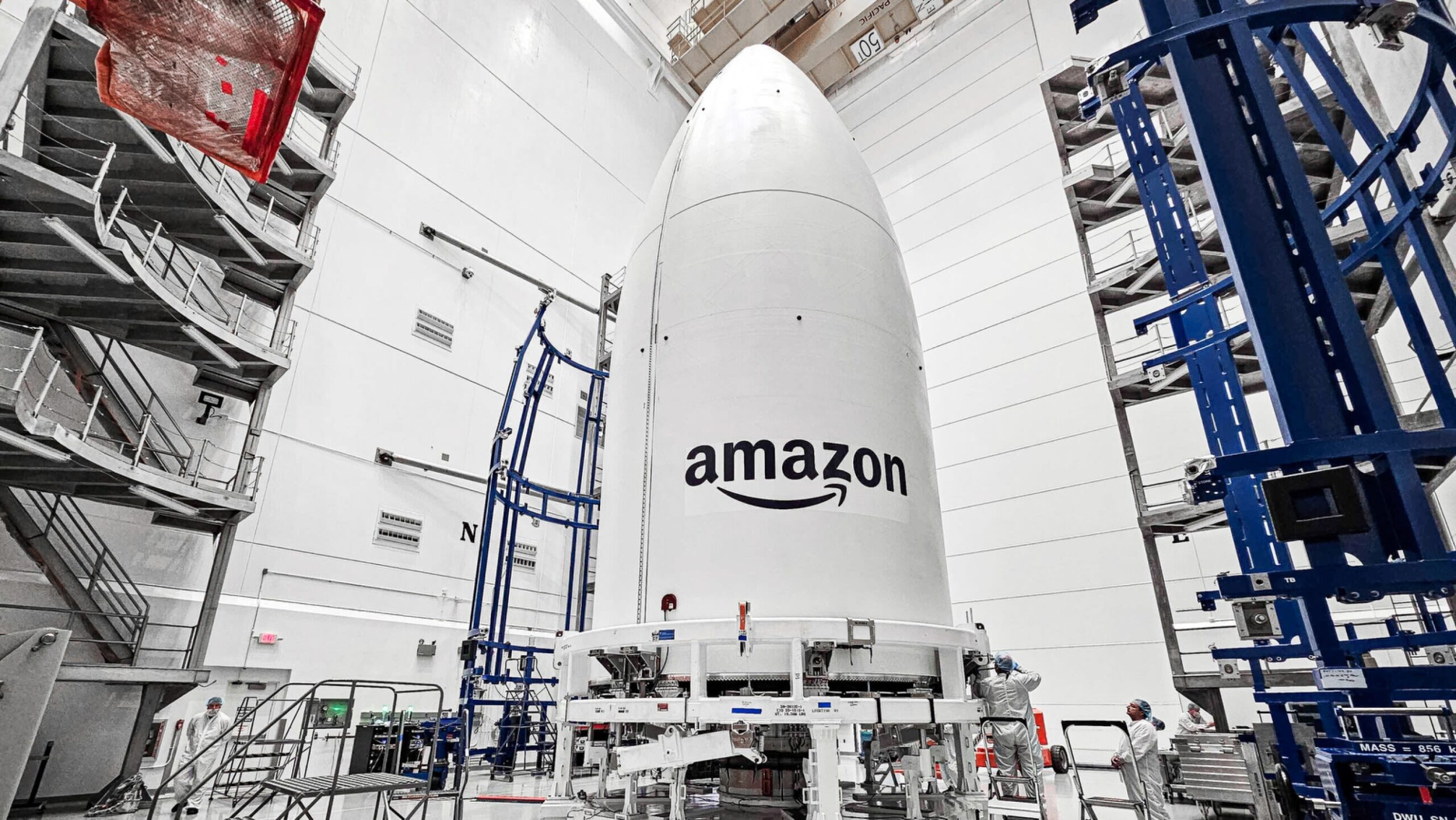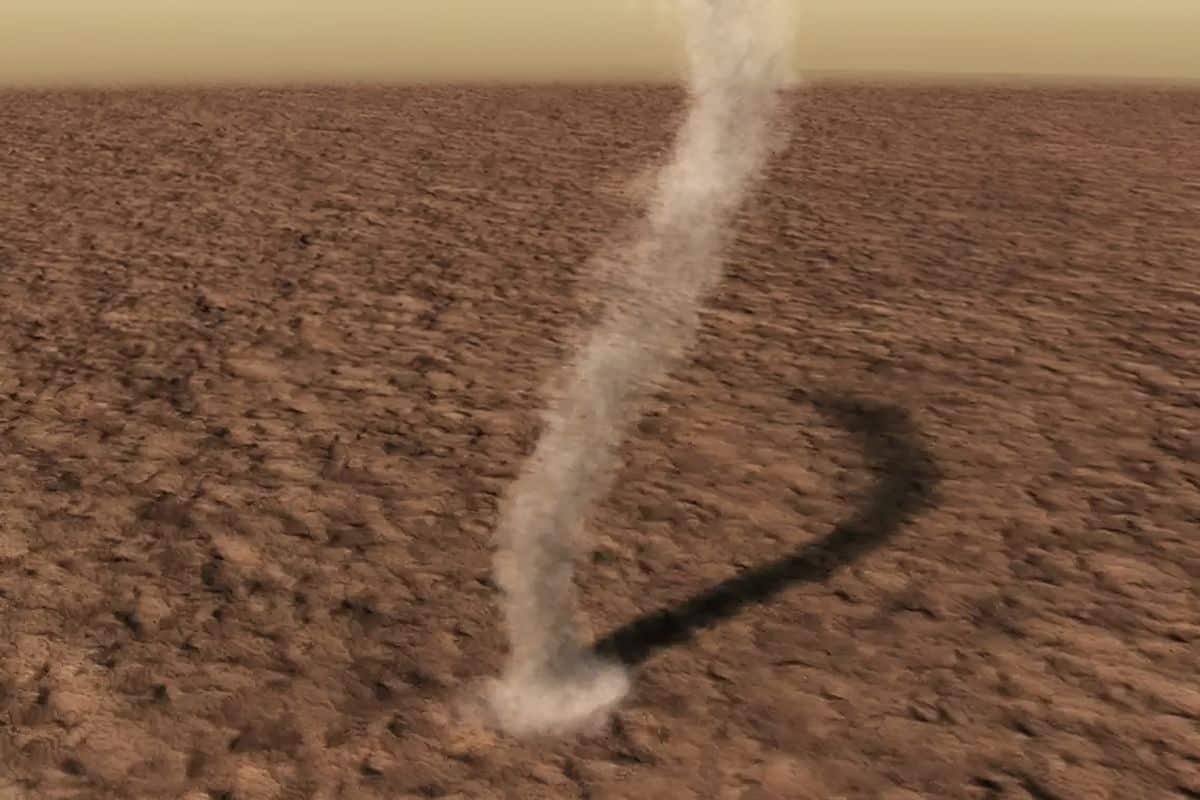Amazon is accelerating its ambitious Project Kuiper, the company’s venture into providing global broadband internet from space, with a series of successful satellite launches. The latest deployment, which occurred on June 23, 2025, saw a United Launch Alliance (ULA) Atlas V rocket launch a second batch of 27 operational Kuiper satellites from Cape Canaveral Space Force Station in Florida. This mission, designated Kuiper 2, effectively doubled Amazon’s operational satellite fleet in Low Earth Orbit (LEO) to 54 units, marking a critical step in its long-term strategy to deliver internet access to unserved and underserved communities worldwide.
Key Takeaways:
- Amazon successfully launched its second batch of 27 operational Project Kuiper satellites on June 23, 2025, bringing its total to 54 in orbit.
- Project Kuiper aims to deploy a constellation of 3,236 satellites across three orbital shells.
- Amazon expects to begin commercial service for Project Kuiper by late 2025.
- The company has secured the largest commercial launch agreement in history, utilizing rockets from ULA, Blue Origin, Arianespace, and SpaceX.
- Project Kuiper is poised to offer high-speed, low-latency broadband, directly competing with SpaceX’s Starlink.
- Amazon is actively pursuing regulatory approvals and establishing ground infrastructure globally, including plans for India.
This rapid advancement by Amazon signals a deepening competition in the LEO satellite internet sector, traditionally led by SpaceX’s Starlink. While Starlink boasts a significantly larger constellation of over 7,600 operational satellites as of May 2025 and a subscriber base exceeding 5 million by February 2025, Amazon’s Project Kuiper is now moving into full-scale deployment with a clear intent to capture a substantial share of the market. Amazon plans to deploy a total of 3,236 satellites operating in 98 orbital planes across three distinct orbital shells at altitudes of 590 km, 610 km, and 630 km.
Project Kuiper: A Detailed Look at Amazon’s Strategy
Amazon’s entry into the satellite internet domain with Project Kuiper is a strategic move to extend its reach beyond terrestrial infrastructure. The company envisions a global network providing reliable and fast internet to a wide range of customers, including consumers, businesses, and government agencies, particularly in regions where traditional broadband access is limited or unavailable. This initiative is a substantial investment, with Amazon committing an estimated $10 billion to the project.
The Kuiper system is designed to provide high-speed, low-latency broadband through a combination of its LEO satellite constellation, compact and affordable customer terminals, and a global network of ground stations, all powered by Amazon Web Services (AWS). Customer terminals are being developed in various sizes to cater to diverse needs, ranging from small, low-speed devices offering up to 100 Mbps to standard terminals providing up to 400 Mbps, and high-bandwidth solutions for businesses capable of delivering up to 1 Gbps. The satellites themselves are equipped with Hall-effect thruster technology for orbital maneuvers and optical inter-satellite links, allowing data to be relayed between satellites in space, thus reducing reliance on terrestrial ground stations and enhancing network efficiency, especially in remote areas.
Amazon’s launch strategy is robust. Following the two prototype satellites launched in October 2023, and the first operational batch in April 2025, the latest June 23, 2025 launch further solidifies its deployment schedule. The company has secured the largest commercial procurement of launch capacity in history, booking dozens of heavy-lift launches with various providers. These agreements include eight Atlas V launches and 38 rides on ULA’s next-generation Vulcan Centaur rocket, along with launches on Blue Origin’s New Glenn, Arianespace’s Ariane 6, and even SpaceX’s Falcon 9 rockets. This multi-provider approach aims to ensure a rapid deployment pace to meet its regulatory obligations, which require Amazon to deploy half of its planned 3,232-satellite fleet by July 2026.
Ground Infrastructure and Global Ambitions
Beyond the satellites, Amazon is building extensive ground infrastructure to support Project Kuiper. This includes a worldwide network of ground stations equipped with high-performance phased array antennas and advanced tracking systems. Unlike geostationary (GEO) satellite ground stations that fix on a single satellite, Kuiper’s LEO gateways dynamically track and switch between satellites in real-time, maintaining continuous connectivity. These ground stations are tightly integrated with AWS, ensuring fast, secure data routing and cloud-based network management.
Amazon is actively pursuing regulatory approvals in various countries to roll out its services. For instance, the company has approached the Department of Telecommunications (DoT) in India, seeking authorization to offer broadband services. Amazon plans to establish a significant ground infrastructure in India, including ten gateway earth stations and two key presence points in Mumbai and Chennai. This infrastructure is crucial for establishing satellite connectivity, data routing, network connectivity, and optimizing latency for Indian users. Brazilian regulator Anatel recently extended the deadline for Kuiper’s operation start and authorized temporary tests in two towns.
The Competition Heats Up: Kuiper vs. Starlink
The satellite internet market is witnessing increasing competition. While Starlink, with its expansive constellation and established subscriber base, currently holds a dominant position, Project Kuiper’s entry is poised to alter the competitive landscape. Starlink initiated its satellite launches in 2019 and has been aggressively expanding its coverage. As of June 2025, Starlink is reported to have approximately 6 million subscribers globally. Starlink’s service offerings include residential plans, portable use with Starlink Roam, Maritime for ships, and Aviation for aircraft. The standard Starlink kit costs around $599, with monthly plans varying by region, typically around $100-$120. Download speeds range from 50-250 Mbps with latency between 20-40 ms.
Project Kuiper aims to differentiate itself through competitive pricing, seamless integration with the Amazon ecosystem (potentially including Eero mesh Wi-Fi routers and AWS services), and a strong focus on underserved communities. Amazon has indicated a goal of keeping customer terminal costs under $400, a potential competitive advantage. The expected consumer download speeds for Kuiper, up to 400 Mbps, are comparable to or exceed Starlink’s typical speeds, with similar low latency due to its LEO design.
The race to connect the world from space extends beyond these two giants. Other players such as Eutelsat OneWeb, which operates with 648 LEO satellites, and various state-backed projects, like China’s Guowang (planning around 13,000 satellites) and Qianfan (targeting about 14,000 satellites), are also making strides. The global build-out of LEO broadband networks reflects a growing recognition of satellite internet as a vital component of future internet infrastructure, especially for bridging the digital divide in remote and challenging geographical areas.
As Project Kuiper moves closer to its commercial rollout, expected in late 2025, the industry will keenly observe its impact on the market. Amazon’s financial resources, technological capabilities, and existing global logistics network could allow Kuiper to scale rapidly and present a formidable challenge to existing providers. The future of global internet access appears increasingly to involve multiple constellations orbiting Earth, vying to deliver connectivity across continents and oceans.
FAQs about Project Kuiper and Satellite Internet
Q1: What is Project Kuiper?
A1: Project Kuiper is Amazon’s initiative to build a low Earth orbit (LEO) satellite constellation to provide high-speed, low-latency broadband internet access globally, especially to communities and regions currently lacking reliable connectivity.
Q2: How many satellites does Amazon plan to launch for Project Kuiper?
A2: Amazon plans to deploy a total of 3,236 satellites for its Project Kuiper constellation.
Q3: When is Project Kuiper expected to begin offering commercial service?
A3: Amazon anticipates beginning commercial service for Project Kuiper by late 2025.
Q4: How does Project Kuiper compare to Starlink?
A4: Both Project Kuiper and Starlink are LEO satellite internet constellations aiming to provide global broadband. Starlink currently has a larger operational constellation and more subscribers. Project Kuiper is in its early deployment phase but aims for competitive speeds, low latency, and potentially more affordable customer terminals, leveraging Amazon’s broader ecosystem.
Q5: What are the key technical specifications of Project Kuiper satellites?
A5: Project Kuiper satellites operate in three orbital shells at 590 km, 610 km, and 630 km altitudes. They are equipped with Hall-effect thrusters for propulsion and optical inter-satellite links for communication between satellites.
Q6: What kind of speeds can customers expect from Project Kuiper?
A6: Amazon states that its standard customer terminals for Project Kuiper will offer download speeds up to 400 Mbps, with high-bandwidth solutions for businesses reaching up to 1 Gbps.
Q7: What is the significance of the recent Kuiper 2 launch?
A7: The Kuiper 2 launch on June 23, 2025, deployed the second batch of 27 operational satellites, doubling Amazon’s operational fleet in orbit. This accelerates the constellation build-out and moves the project closer to its commercial service launch.
Q8: Where will Project Kuiper be available?
A8: Project Kuiper aims to provide global coverage, focusing on regions without reliable internet access. Amazon is actively seeking regulatory approvals and establishing ground stations in various countries, including Brazil and India.
Q9: What is the role of AWS in Project Kuiper?
A9: Amazon Web Services (AWS) plays a significant role in Project Kuiper’s infrastructure, powering ground stations, enabling fast and secure data routing, and supporting cloud-based network management. AWS IoT SiteWise is also used for monitoring and optimizing satellite component production.
Q10: What launch vehicles is Amazon using for Project Kuiper?
A10: Amazon has secured launch agreements with multiple providers, including United Launch Alliance (ULA) for its Atlas V and Vulcan rockets, Blue Origin for New Glenn, Arianespace for Ariane 6, and SpaceX for Falcon 9.
